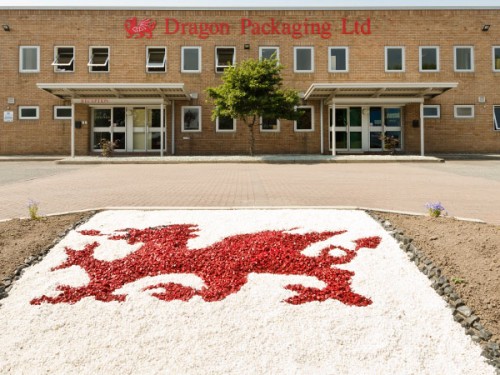Single use plastic packaging in the food industry
The use of plastics is extremely beneficial to packaging for food, the materials provide increased shelf life, protection and an efficient way of handling product on a packing line.
The Blue Planet documentary has focussed governments, retailers and consumers alike on the damage caused by the amount of plastic waste in our oceans.
It is our belief that it is the management of the plastic waste that needs addressing.
We already use rPET material in our packaging and this material contains a minimum of 60% recycled material obtained from post- consumer waste and from our own internal waste.
It should be noted that all packaging supplied by Dragon Packaging can be recycled if managed correctly by the recycling facilities.
BLACK TRAYS
There has been much spoken about the recyclers’ inability to manage black packaging due to these items not being read by the scanners, Dragon Packaging is currently working with one of our suppliers to provide packaging that is manufactured using a material with a black pigment in its ‘A’ layer that can be read by scanners and trials will be completed by the end of July 2018.
It should be noted that black rPET may use post-consumer bottle waste that is too heavily tinted to be used in the manufacture of clear sheet material and any move away from black packaging risks condemning many thousand of tonnes of this tinted material to landfill, it is surprising that some of the retailers are considering using grey of bronze coloured packaging as an alternative to black but what will become of this packaging once it is delivered to the recyclers? – most likely it will end up in landfill, it could have been turned into a black material.
ALTERNATIVES TO PLASTIC PACKAGING
Some retailers have favoured a move to board packaging as an alternative to plastic packaging, however, in most instances a board tray is not effective as it will absorb moisture, fats and oils from the food content; to combat this board trays with a plastic laminated liner are being used creating a pack that is neither recyclable nor compostable.
BIO-COMPOSTIBLE AND BIO-DEGRADABLE PACKAGING
Dragon Packaging is currently an industrial partner working to develop an improved HDT ( Heat Deflection Temperature ) bio-plastic sheet for use in the manufacture of coffee cup lids and lining material for coffee cups as well as trays suitable for use in microwaves. This project is funded by Innovate UK and we are currently in Q3 of a Q8 project.
The base material used in this project is PLA (Polylactic Acid), this is a brittle material and not ideally suited for thermoforming plastic food packaging and to this end we have developed a blend of material using organic fillers and additives that allows the material to meet the requirements of a a compostable material whilst having good impact strength and good formability. We are carrying out a commercial trial of this blend within the next three weeks and samples will be available shortly after.
PROS AND CONS OF BIOPACKAGING
If managed correctly and sent to commercial aerobic composting facilities, bio-polymer based packaging can become a valuable part of the compost produced.
Sheet materials made from biopolymers are expensive and, whilst increased uptake will bring the costs down, we are a long way off from seeing the costs coming close to those of rPET.
All natural products are biodegradable but in order for them to biodegrade they need to be in an environment where the microorganisms can thrive in order to digest the biopolymer – if biopolymer based materials are simply put into landfill, they can remain there for decades without biodegrading since landfill sites do not have a ready supply of oxygen and moisture which are necessary for these microorganisms to grow. In a recent study in USA, samples were taken from a landfill site at various depths and a hot dog was found to be totally in tact after a number of years also some corn on the cob showing no sign of degradation and a newspaper from 1952 which could still be opened and read.
Bio-compostable packaging will bio-compost in a commercial aerobic composter but very few councils have the infrastructure to process this packaging at the present time – so this packaging has nowhere to go and, indeed, risks contaminating the existing packaging that is currently being successfully recycled, it would be necessary for recyclers to install NIR spectroscopy separators to identify a single new material.
Consideration should be given to whether it is better to efficiently manage the recycling of existing non bio-based packaging before we rush into using bio-compostable packaging.
Dragon Packaging is not currently evaluating PHA or PHB biopolymers as these are hugely expensive and global production volumes are relatively low.
rPET/PE PACKAGING
The use of rPET/PE trays creates a significant problem for recyclers, the material has no commercial value and will inevitably end up in landfill. Dragon Packaging are trialling a material that contains a PET copolymer in the A layer which we believe will allow users to apply the lidding film to this A layer and the tray can then be fully recycled, the production trials are scheduled for the end of August.
PLEASE WATCH OUT IN OUR NEWS SECTION FOR FURTHER UPDATES

